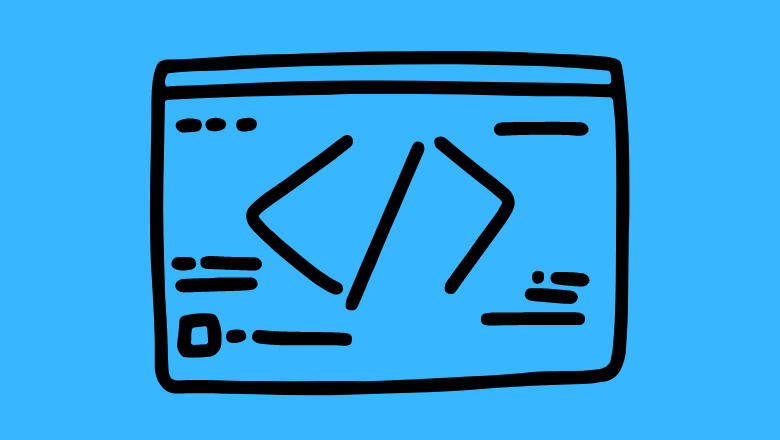
Ever wondered what mistakes Django Developers make 🤔
As a Django developer, it is essential to avoid making common mistakes that can cost you time, money, and success.
This guide will explore the top 8 mistakes Django developers make and provide practical solutions to each mistake.
By following these guidelines, you can succeed and make the most of your Django development experience.
Mistake #1: Failing to Plan Ahead
One of the most common mistakes that Django developers make is failing to plan. It is crucial to clearly understand the project’s goals, requirements, and timelines before starting development. Proper planning saves developers time and resources, resulting in a suboptimal end product.
Wrong Opinion: Some developers believe that planning wastes time and that they can figure things out as they go along. This is a wrong opinion, as it can lead to a confusing and chaotic development process.
Solution: Create a project plan with a clear timeline, scope, and milestones. Having a roadmap ensures that everyone on the development team is on the same page.
Mistake #2: Ignoring Security
Ignoring security is a mistake that can have severe consequences. Cyber attacks are becoming more sophisticated, and Django developers must take steps to protect their applications from vulnerabilities.
Wrong Opinion: Some developers believe that security is optional or that they will address it later. This is a wrong opinion, as it can result in data breaches, theft of intellectual property, and other serious consequences.
Solution: Integrate security into the development process from the outset. Use secure coding practices, regularly test for vulnerabilities, and implement security protocols and procedures.
Mistake #3: Overcomplicating Code
Overcomplicating code is a mistake that can lead to errors, bugs, and inefficiencies. Writing clean, concise, and easy-to-understand code that can be maintained and updated in the future is essential.
Wrong Opinion: Some developers believe complex code is necessary for functionality or performance. This is a wrong opinion as it can lead to confusing and error-prone code.
Solution: Follow the DRY (Don’t Repeat Yourself) principle and write modular, reusable code. Use comments and documentation to make the code more readable and understandable.
Mistake #4: Not Testing Enough
Testing enough is a mistake that can result in costly bugs and errors. Testing thoroughly throughout the development process is essential to catch issues before they become significant problems.
Wrong Opinion: Some developers believe that testing is unnecessary or that they can catch issues as they arise. This is a wrong opinion, as it can result in missed bugs and errors that can have serious consequences.
Solution: Implement a comprehensive testing strategy, including unit, integration, and end-to-end testing. Use automation tools to streamline the testing process and ensure comprehensive coverage.
Mistake #5: Poor Code Organization
Poor code organization can make it challenging to maintain and update code in the future. Following best practices for code organization is essential to ensure a clean and efficient development process.
Wrong Opinion: How a code is organized is a matter of personal preference. This is a wrong opinion as it can result in disorganized and difficult-to-maintain code.
Solution: Follow best practices for code organization, such as using consistent naming conventions, grouping related functions, and separating concerns into different files or modules.
Mistake #6: Not Utilizing Django’s Built-in Functionality
Django provides many built-in functionalities that can save developers time and effort. These tools can make the development process more efficient, secure, and well-tested. Taking advantage of these built-in tools, such as Django’s authentication and user management systems, is essential instead of creating custom solutions from scratch.
Wrong opinion: Some developers may think that creating their solutions from scratch will give them more control and flexibility over their code.
Solution: Django’s built-in functionality is highly customizable and can be easily extended to fit various use cases. By utilizing these built-in tools, developers can ensure that their code is secure and well-tested while having the flexibility to customize and extend the functionality per their needs.
In conclusion, not utilizing Django’s built-in functionality can lead to unnecessary work, security vulnerabilities, and bugs in the code. Using these tools saves developers time and effort while ensuring their code is well-optimized, secure, and efficient.
Mistake #7: Neglecting to Test Code Thoroughly

Refraining from thoroughly testing code is a common mistake many Django developers make. Testing code is essential to the development process. It helps identify errors and ensure that the code functions as intended. With thorough testing, it can be easier to identify bugs and issues in the code, which can lead to problems down the line.
Some developers may think that testing wastes time and that they can rely on their intuition to identify errors. However, this approach can be risky, as it is easy to miss errors or overlook potential issues.
Additionally, relying solely on intuition can lead to a lack of consistency in the testing process, making it challenging to ensure that all code is thoroughly tested.
To address this mistake, developers should make testing an integral part of their development process. This can involve automated testing tools and frameworks to ensure that code is tested consistently and thoroughly.
It is also essential to clearly understand the expected behavior of the code and test it under various conditions to identify potential issues.
Wrong Opinion: Testing is a waste of time and resources.
Practical Solution: Testing is an essential part of the development process that helps identify errors and ensure that the code functions as intended. It is important to use automated testing tools and frameworks to ensure that code is tested consistently and thoroughly.
All code should be thoroughly tested during the development process.
Mistake #8: Not Optimizing Database Queries

Django makes it easy to work with databases. Still, optimizing database queries is essential to ensure the application runs smoothly. Not optimizing database queries can lead to slow performance, which can be frustrating for users.
One common mistake developers make is not using Django’s built-in caching functionality. Faster performance can be achieved by caching database queries. Another common mistake is to use the right database indexes.
Indexes can speed up database queries by allowing the database to find the data it needs quickly.
To avoid this mistake, developers should take the time to optimize database queries. This can involve using Django’s caching functionality and ensuring the correct database indexes are in place. Monitoring database performance and adjusting to confirm the application runs smoothly is also essential.
Wrong Opinion: Optimizing database queries is optional.
Practical Solution: Optimizing database queries is crucial for ensuring the application runs smoothly and performs well for users. This can involve using Django’s caching functionality and providing that the correct database indexes are in place.
Monitoring database performance and adjusting as needed to ensure optimal performance is essential.
Wrapping up mistakes That Django Developers
Django is a robust web framework that provides developers with many tools and functionality to build web applications.
However, developers make several common mistakes when working with Django, such as not using reusable code, not utilizing Django’s built-in functionality, neglecting to test code thoroughly, and not optimizing database queries.
To avoid these mistakes, developers should use reusable code, leverage Django’s built-in functionality, test code thoroughly, and optimize database queries. By following these best practices, developers can ensure that their Django applications are performant, scalable, and maintainable.
Lydia is a seasoned technical author, well-versed in the intricacies of software development and a dedicated practitioner of Python. With a career spanning 16 years, Lydia has made significant contributions as a programmer and scrum master at renowned companies such as Thompsons, Deloit, and The GAP, where they have been instrumental in delivering successful projects.
A proud alumnus of Duke University, Lydia pursued a degree in Computer Science, solidifying their academic foundation. At Duke, they gained a comprehensive understanding of computer systems, algorithms, and programming languages, which paved the way for their career in the ever-evolving field of software development.
As a technical author, Lydia remains committed to fostering knowledge sharing and promoting the growth of the computer science community. Their dedication to Python development, coupled with their expertise as a programmer and scrum master, positions them as a trusted source of guidance and insight. Through their publications and engagements, Lydia continues to inspire and empower fellow technologists, leaving an indelible mark on the world of scientific computer science.


![15 Most Contributed Python Projects on GitHub [Stats]](https://hirepythondeveloper.com/wp-content/uploads/2024/03/15-Most-Contributed-Python-Projects-on-GitHub-Stats-1-150x150.png)




